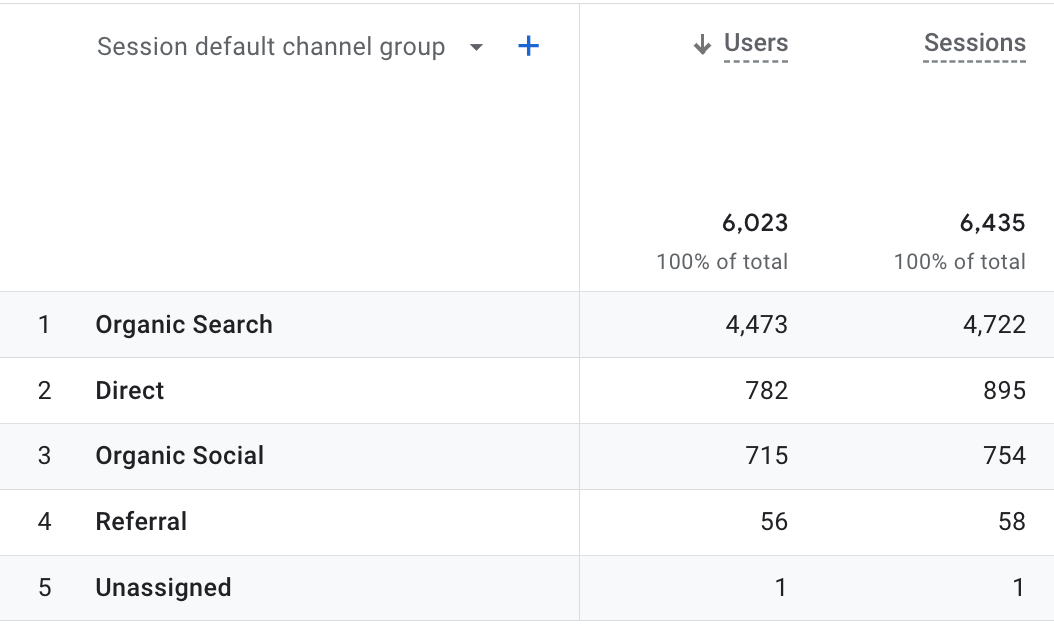Maximize Your Coverage with Secondary Dimension in Google Analytics
Maximize Your Coverage with Secondary Dimension in Google Analytics
Blog Article
Enhance Your Data Evaluation Using Second Dimension in Google Analytics
Discovering the abilities of secondary measurements in Google Analytics opens up a realm of possibilities for refining information evaluation. By layering extra measurements onto main data sets, an even more elaborate story arises, shedding light on customer interactions and efficiency indications.
Comprehending Secondary Dimensions
Second measurements in Google Analytics refer to additional parameters that can be included to the primary measurement, permitting for a more thorough evaluation of data (Secondary Dimension in Google Analytics). By integrating additional measurements, experts can segment and filter information to uncover patterns, fads, and correlations that could not be apparent when looking at the information as a whole.

Advantages of Using Secondary Dimensions
When evaluating data in Google Analytics, the usage of secondary measurements offers vital insights into customer actions and performance metrics. By including an additional dimension to your key information, you can dig much deeper into the characteristics of your website site visitors and their interactions.
In addition, additional dimensions aid in determining patterns and correlations that may not be promptly noticeable when taking a look at the data in seclusion. This much deeper degree of analysis can uncover beneficial info that can guide advertising strategies, internet site optimization, and total organization choices. Additionally, secondary dimensions boost the context of your key data, giving a much more thorough sight of customer engagement and efficiency metrics. Overall, making use of second measurements in Google Analytics can considerably improve the depth and quality of your information evaluation, bring about even more informed decision-making and enhanced outcomes.
Just How to Include Additional Measurements
By including additional measurements in Google Analytics, customers can acquire much deeper insights into their data evaluation procedure, permitting for more thorough assessment of customer habits and performance metrics. Adding second measurements is a straightforward process that can considerably improve the deepness of analysis. As soon as in the record, locate the "Additional measurement" tab above the information table.
Studying Data With Additional Dimensions
Using secondary measurements in data evaluation offers a much more extensive understanding of customer behavior and efficiency metrics. By adding a second dimension to your key information established in Google Analytics, you can delve much deeper right into the characteristics of your web site site visitors and their interactions. Combining the key dimension of 'source/medium' with the secondary measurement of 'touchdown web page' can reveal which details top article pages are drawing in traffic from different resources, helping you optimize these pages web link for far better interaction.

Essentially, analyzing information with additional measurements empowers you to acquire valuable insights right into individual habits, recognize fads, and make educated choices to enhance the efficiency of your electronic properties.
Best Practices for Additional Measurements
In information analysis, integrating secondary measurements efficiently can significantly improve the depth of understandings stemmed from metrics and user behavior patterns. When using secondary measurements in Google Analytics or any various other logical device, it is important to abide by best methods to make certain the precision and relevance of the information evaluation.
One secret finest method is to very carefully select second dimensions that complement the primary measurement being evaluated. Choosing secondary measurements that offer added context or further segmentation can offer a more comprehensive understanding of the information. It is also important to avoid overcomplicating the evaluation by including a lot of additional measurements, which may cause confusion or dilution of insights.
Furthermore, it is recommended to trying out different mixes of main and additional measurements to discover brand-new relationships and trends. Regularly refining the option and examining of additional dimensions based upon the specific from this source objectives of the analysis can bring about even more actionable understandings. By complying with these best practices, data experts can leverage secondary measurements properly to boost the overall data analysis procedure and decision-making capabilities.

Verdict
To conclude, incorporating additional dimensions in Google Analytics is necessary for a detailed data analysis technique. By leveraging secondary dimensions along with main ones, marketers and experts can reveal useful understandings and correlations that can notify decision-making and optimize electronic marketing methods. Comprehending just how to efficiently utilize secondary dimensions and following best practices will certainly allow experts to remove purposeful data and enhance their total efficiency metrics.
Second measurements in Google Analytics refer to extra specifications that can be included to the key dimension, enabling for an extra in-depth evaluation of data. By incorporating second dimensions, experts can segment and filter data to uncover patterns, trends, and relationships that may not be evident when looking at the data as a whole. Combining the main measurement of 'source/medium' with the additional measurement of 'touchdown web page' can reveal which specific web pages are bring in web traffic from different sources, helping you maximize these pages for better involvement.
One secret finest technique is to meticulously choose additional dimensions that complement the primary measurement being assessed. By following these finest methods, information analysts can leverage second dimensions successfully to boost the total data evaluation procedure and decision-making abilities.
Report this page